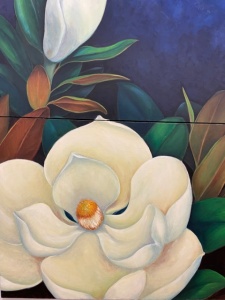
By Avi Landau
It was good to be back in Hojo (北条), the old town (now part of Tsukuba City) near the southern slope of Mt. Tsukuba that I used to live in -till it was devastated by a deadly tornado back in 2012. It was nice to roam the old familiar streets, see some old friends and acquaintances, and see how well the recovery has gone there (when I left, my old street was lined with empty lots that had been cleared of debris and whatever had been left of the houses that had stood there).
And being early June, it was also the perfect time to be there – with the surrounding scenery at its most colorful! That’s right, even more than autumn, with its foliage, it is late spring and early summer, with its fresh greenery (SHINRYOKU, 新緑) in which that area (and much of the rest of Tsukuba) dazzles most.

What makes Japan’s season of fresh greenery different from other countries where fresh leaves burst forth from bare winter trees, is the presence of the newly transplanted rice stalk in the paddy fields – whose unique color (traditionally called 若苗色 WAKANAE IRO) creates an exciting contrast with all the various shades of fresh green (traditionally called 若葉色 WAKABA IRO) on the surrounding hills. Hojo and the other neighborhoods near Mt. Tsukuba (and the other low mountains running out it, are the best places in mostly-flat Tsukuba, to enjoy this astounding contrast.
And deep in the rainy season the INTENSE greenery (and that’s what it is) all around fills me with a sense LIFE and GROWTH (and contemplating this yesterday it hit me that the English word GREEN is related etymologically to the word GROW).

So lost in thought and wandering down that insanely green memory lane, I suddenly
The TAISANBOKU (magnolia grandiflora)
So, lost in thought and wandering down that insanely green memory-lane I found myself at the old Hojo Oike Pond. Walking along its southern embankment, I looked down below to the south and noticed, among all the verdure, what seemed to be large lotus flowers growing high up on tall trees- about 50 meters from where I was walking – the off-white petals curving skywards as if giving salutations to the sun!
I stopped for a more focused looked, and realized that the grand tree with the large, deeply green leaves and the immense white blossoms was what the Japanese call a TAISANBOKU tree- which literally means; the Mt. Tai tree.
And just where is Mt. Tai (Taishan)? Well, not in Japan – but in China’s Shandong Province. It has long been one of China’s most famous sacred mountains.
It must be the grandeur and mystery of this mountain which to which the name of the tree- also grand and mysterious, and covered with extraordinarily large and fragrant blossoms which really look like lotuses- a blossom sacred in Buddhism.

With this distinguished and exotic name which conjures up images of China, Buddhism, and mountain ascetics, one might think that this tree had come to Japan from China- as so many of Japan’s popular plants and trees have.
That is why you might be surprised to find out that this amazing tree is the SOUTHERN MAGNOLIA, which comes originally from the American South, where it commonly grows ( often called simply a magnolia), and where it is a veritable symbol of the American South* ( and the state tree of Mississippi) and was introduced to Japan only sometime after the Meiji Restoration (1868).
Over the years it has become a popular decorative tree in this country which can grow up to 10 meters tall. Its impressive and very fragrant (in a citrusy way) blossoms bloom in June and early July.
I’m planning on going back and having a look at it that tree at night. The blossoms in the moonlight should be magical!

* The most famous southern magnolia was the Jackson Magnolia, planted on the White House lawn by President Andrew Jackson back in 1828. You can actually see it on the old 20 dollar bills. That tree had to be cut down in 2017 (due to old age) – and it is ironic, that it had to happen under Trump – who was a big fan of Jackson.


